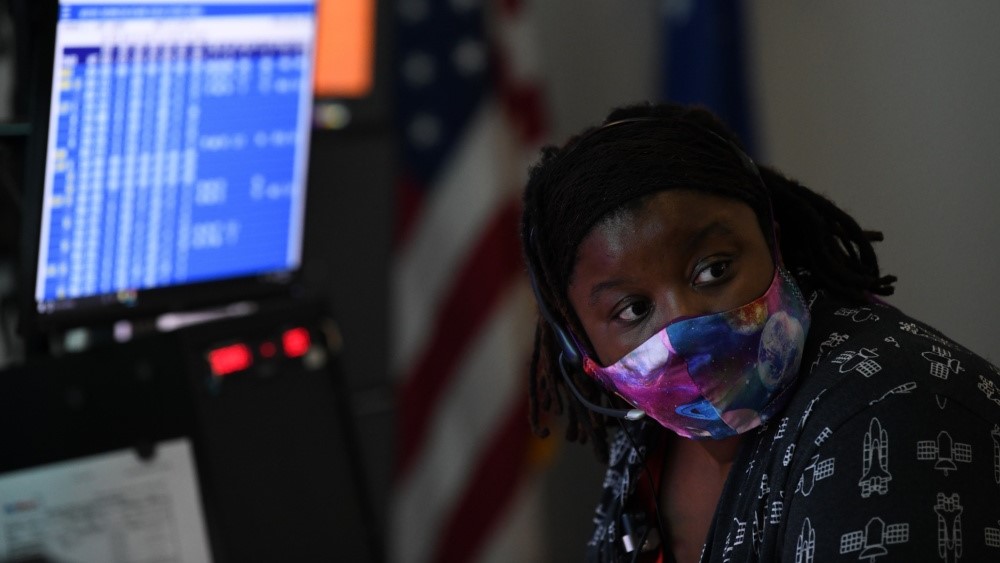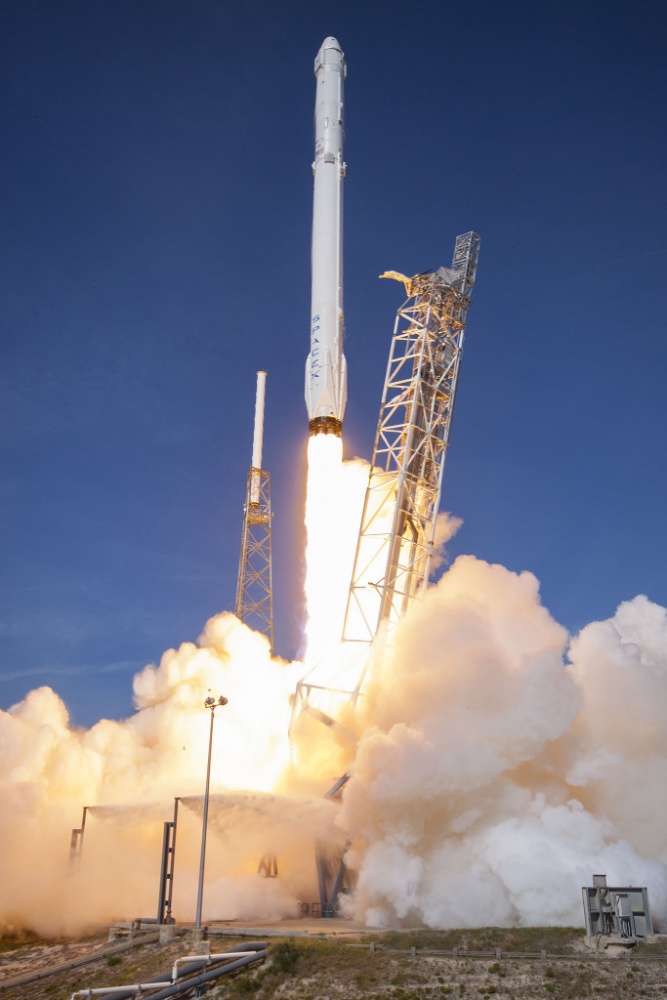CAPE CANAVERAL AIR FORCE STATION, Florida — On March 26, 1987, NASA launched Atlas/Centaur AC-26 from Cape Canaveral. Just 49 seconds after liftoff, it was struck by lightning.
The electrical charge of the lightning strike sent an erroneous message to the engines, causing them to overfire and the rocket to break up, leading to the break up of the launch vehicle.
Luckily, no astronauts were on board, but a multimillion-dollar Navy satellite that required years to manufacture was lost.
A NASA after-action report determined that although natural lightning conditions did not exist, the atmospheric conditions led the rocket to produce its own lightning.
“Triggered lightning is a phenomenon that occurs when rockets are launched into strong electric fields, and they can actually produce their own lightning,” 45th Weather Squadron Launch Officer Arlena Moses told the Washington Examiner on a breezy and sunny, 75-degree “classic Florida winter day” on Florida’s Space Coast.
Now, the Weather Squadron adheres to strict Lightning Launch Commit Criteria, also known as LLCC.
Rockets that don’t launch on sunny days and rockets that lift off in the rain are all informed by the Space Force’s 45th Weather Squadron, the dozen high-end meteorologists who look at everything from upper atmosphere winds to “space weather” phenomena caused by the sun.
As a meteorologist with 17 years of experience, the launch officer responsible for helping to assure safe access into space said it’s not just blue skies that give a launch the green light.
“It may or may not be just one thing,” Moses explained.
“It’s usually not just the wind — it’s the wind speed and direction. It’s not just the thunderstorm. It’s how far the thunderstorm is, how long ago it happened, and how tall it is and how cold those cloud temperatures are,” she said. “It’s not that it’s raining. It is how close is the rain and how heavy is the rainfall?”

Also, the atmospheric conditions for a NASA human launch versus commercial clients, including SpaceX, United Launch Alliance, and soon, Jeff Bezos’s Blue Origin all have different criteria.
The customer makes the final decision on whether to launch after evaluating the information compiled by the 45th Weather Squadron.
“The Weather Squadron is truly an enabler,” ULA Director and General Manager of Launch Operations Tony Taliancich told the Washington Examiner.
“They give us data that allows us to launch when otherwise we might not be able to,” he said. “We’ve defined a very clear set of requirements to make sure that the rocket can deal with the winds, the cross-shear from the winds, and the rain and that it’s protected from any potential lightning strike.”
Each rocket is also different, from ULA’s Delta rockets to SpaceX’s Falcon rockets to the New Glenn rockets developed by Blue Origin.
The payload also matters in the risk assessment of whether to launch or not.
“We’re doing it for payloads that are worth billions of dollars and have capabilities that are critical to our national security,” said Taliancich. “There are payloads that you can’t replace.”
He added: “If you don’t put up one of these national security satellites, it doesn’t provide a capability that could save lives. So, those lives can’t be safe with the next satellite ’cause it’ll come several years later, a decade later.”
Blowing in the wind
It’s not just Moses and her team staring at screens and evaluating weather data. The squadron also launches daily weather balloons and reconnaissance aircraft on flight days to collect information in the upper atmosphere that can push a rocket off course.
“For weather, it’s a lot of different things that most people don’t see,” said Taliancich, a 20-year Air Force veteran who helps ULA launch about a dozen payloads per year.
“We don’t launch some days when there’s a cross-shear in the winds in the upper atmosphere,” he said. “The Weather Squadron is able to map those wind shears, and the public may see a perfectly clear day.”

Then, there’s the cloud depth and the cloud temperature on launch day.
“That’s probably one of the hardest jobs on launch day,” Moses said.
A reconnaissance plane from Patrick Air Force Base will fly into the clouds to measure cloud depth and cloud temperature that are masked by radar.
A rocket that lifts off into a super-cooled cloud in the upper atmosphere will be racing toward a virtual ice storm at high velocity.
Then, there’s space weather.
“Just like we have the weather here in the atmosphere of earth, there are events that happen in between us and the sun that we refer to as space weather,” said Moses.
Solar flares, geomagnetic storms, and sunspots can all cancel a launch.
“Sometimes, the sun gets a little angry, sends out a little flare into space, and when that happens, it excites the electrical field between the sun and the earth,” she said. “It changes that electrical field, which may change in effect some of the electrical components that are out there.”
Despite the long hours staring at screens and the late-night launches and postponements, only 1 in 4 launches is canceled. Moses said each launch is worth it.
“Every launch is cool. They never get old,” she said.
Moses then reflected on the satisfaction of the Nov. 15 SpaceX Crew-1 mission that sent Space Force’s future first astronaut to the International Space Station.
“Being part of the whole operation” was the most satisfying part of her job, she said. “To know that you were part of helping successfully and safely to get the crew up to orbit.”





